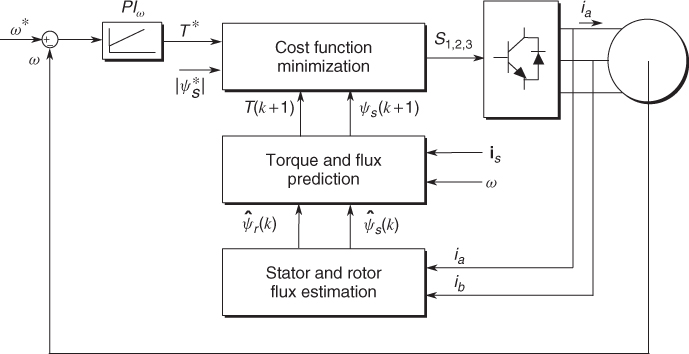8.4 Predictive Torque Control of an Induction Machine Fed by a Voltage Source Inverter
For an induction machine, it can be demonstrated that both the stator flux ![]() and electromagnetic torque T can be modified by selecting a proper voltage vector sequence that modifies the magnitude of the stator flux and at the same time increases or decreases the angle between the rotor and stator flux. These ideas correspond to the basics of direct torque control.
and electromagnetic torque T can be modified by selecting a proper voltage vector sequence that modifies the magnitude of the stator flux and at the same time increases or decreases the angle between the rotor and stator flux. These ideas correspond to the basics of direct torque control.
In predictive torque control (PTC), the same principle is used, but in this scheme predictions for the future values of the stator flux and torque are calculated. Hence, the reference condition, which is implemented by a cost function, considers the future behavior of these variables. Predictions are calculated for every actuating possibility and the cost function selects the voltage vector that optimizes the reference tracking. A block diagram of PTC is shown in Figure 8.5.
Figure 8.5 PTC scheme

The block concerning estimation is used to calculate the current values of the variables that cannot be measured, such as the rotor flux ![]() and the stator flux . Then, the predictive model computes the future values of controlled variables at the ...
and the stator flux . Then, the predictive model computes the future values of controlled variables at the ...
Get Predictive Control of Power Converters and Electrical Drives now with the O’Reilly learning platform.
O’Reilly members experience books, live events, courses curated by job role, and more from O’Reilly and nearly 200 top publishers.

